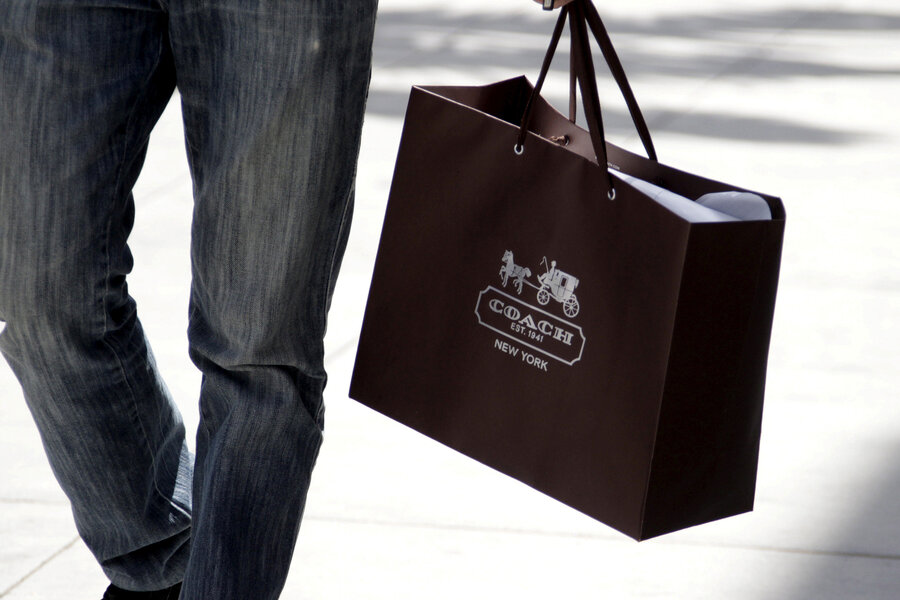What department stores say about America's changing income classes
Loading...
Coach has a message for department stores: it's time to redefine the relationship.
The apparel brand has announced a decision to pull its products from 250 department stores nationwide and to emphasize the Coach specialty stores and online marketplace, Fortune reported.
This is just one example of marketplace transformation in a cycle that highlights changes in relationships among stores, consumers, and American incomes.
"Retail stores are not going to go away, but each one has to become more refined in how they define their business model and work towards making their consumer happy," says Arvind Rangaswamy, a marketing professor at the Penn State Smeal College of Business.
The administrators at Coach, and a number of other labels, say their brand is suffering at the hands of discount-happy department stores that tried to cut costs by putting fewer sales associates on the floor. Department stores have long used their clout to set the terms on brand retail: managers decide what products they want, and communicate their wishes accordingly; they are then responsible for selling what they selected.
But department stores are no longer holding up their side of the bargain, Dr. Rangaswamy says, and brands such as Coach are trying to reclaim some of the retail power.
These brands have been emboldened as department-store powerhouses such as Kohl's, Macy's, and JC Penney's have reported sales dropping for apparel in particular, as The Christian Science Monitor's Max Lewontin wrote:
Millennials haven't stopped buying clothes. They're buying them online. The shift in what – and where – consumers are buying is also influenced by the rise of online retailers such as Amazon. Department stores in aggregate lost an estimated $348 million dollars in apparel revenue in the first quarter, while Amazon likely grew its apparel sales by $1.4 billion in the period, the Wall Street Journal reported.
More is at work here than just the rise of online shopping, says Barry Bluestone, a political economist at Northeastern University. He studied the first movement away from department stores and into discount stores in the 1970s, and he says the cause now is the same: a declining middle class.
"Retail trade is going to ultimately reflect the underlying distribution of family incomes, so with stressed incomes, they're going to look for the most inexpensive and most efficient way to do their shopping," Dr. Bluestone says.
This leaves digital retailers such as Amazon – as well as the Post Office, UPS, and FedEx – the winners, with smaller, consumer-oriented boutique stores maintaining their hold on the more significant purchases of the wealthy.
In a sense, this marks a return to pre-department-store days, when consumers purchased clothes and other goods via catalogue and received them by mail, according to Louisa Iarocci, an architectural historian at the University of Washington. Department stores initially served to bring high-end luxury to middle class buyers, suggesting that anyone could have the freedom to browse and make purchases at will.
"The idea was that it was open to anyone and the cost of garments really went down," Dr. Iarocci says. "The department store really had this balance of the image of luxury with something that is mass produced."
But now, consumers can do their searching online, says Dr. Rangaswamy, citing a 30-percent decline in the number of visits people make to stores. They need to visit stores only when they are providing some type of additional service.
They rely less and less on the stores to give them options, and their flight is leaving department stores responsible for returning to their original purpose – to provide consumers with a "spatial experience," Iarocci says.
"Going into the city and having that sort of spatial experience is still something that people want," Iarocci insists. And unless department stores want consumers and brands alike to go elsewhere, they must develop ways to provide it.






